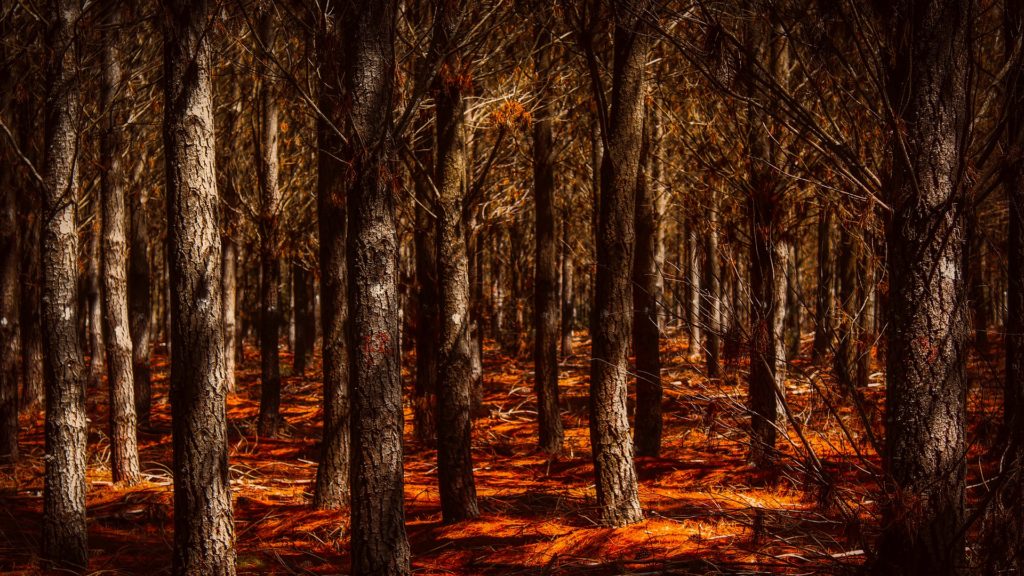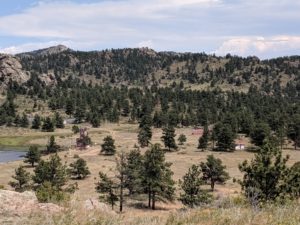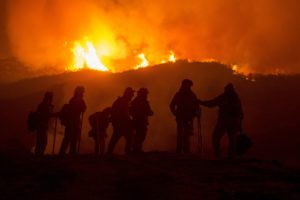
The year of 1910 was one of the driest in recorded History. More than five million acres burned in the United States. Three million of those acres were torched in only two short days during the Great Fire. At least 85 lives were lost, 78 of them fallen fire fighters. An estimated 7.5 billion board feet of timber (enough to fill a freight train 2,400 miles long) was destroyed. Entire towns went up in smoke in a matter of hours. The Great Fire burned its way into the American conscience as no other fire had ever done before and has influenced forest management policy to this very day.
How we got on this path
Since the mid-1800’s, human influence on the land has resulted in forests that are dramatically different from what we see today. Management practices, such as fire suppression and timber harvesting, have altered the structure of forests across most of the western United States. These actions have led to overgrown forests, which are at a much higher risk of severe wildfire.
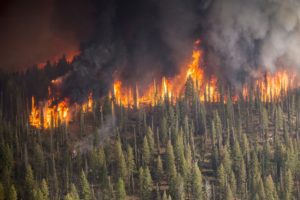 Historically, wildfires occurred in varying sizes and intensities across the landscape. They were both caused naturally by lightning and intentionally set by Native Americans for the diversity of benefits fire can create (Kelsey 2019). These frequent-fires supported healthy forests with complex mosaics of trees of varying sizes and open areas, which created natural fire breaks.
Historically, wildfires occurred in varying sizes and intensities across the landscape. They were both caused naturally by lightning and intentionally set by Native Americans for the diversity of benefits fire can create (Kelsey 2019). These frequent-fires supported healthy forests with complex mosaics of trees of varying sizes and open areas, which created natural fire breaks.
In the mid-19th century the systematic elimination of fire from western landscapes began. First came the removal of Native American burning practices. This was followed by widespread fire suppression in the wake of the Great Fire of 1910. In the aftermath of the Great Fire, the U.S. Forest Service launched a highly successful campaign to extinguish all wildfires from the landscape. The campaign, which would lead to the creation of Smokey Bear, completely changed forest ecology and continues to this day.
How fire suppression moved us down the path
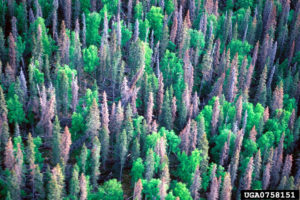 Ecosystems that are dependent on fire to thin the forest canopy are slowly transformed without enough natural fire. By eliminating fire from the equation, we increased densities of trees, decreased species types, and reduced variety of age and size. Native plant species that depend on sunlight have been overtaken by those that prefer shade. The forest has become denser with excessive undergrowth and littered with dead plant material. Forest ecosystem diversity has declined, leading to vulnerability to drought and invasive insect destruction. In addition, dense, young forests are more susceptible to some diseases that can lead to large-scale tree die offs and conversion to non-forest vegetation (Kelsey 2019).
Ecosystems that are dependent on fire to thin the forest canopy are slowly transformed without enough natural fire. By eliminating fire from the equation, we increased densities of trees, decreased species types, and reduced variety of age and size. Native plant species that depend on sunlight have been overtaken by those that prefer shade. The forest has become denser with excessive undergrowth and littered with dead plant material. Forest ecosystem diversity has declined, leading to vulnerability to drought and invasive insect destruction. In addition, dense, young forests are more susceptible to some diseases that can lead to large-scale tree die offs and conversion to non-forest vegetation (Kelsey 2019).
Forests in these dense structural conditions are more susceptible to uncharacteristically large, high-severity wildfires that often produce undesirable ecological and social outcomes (Paveglio et al., 2015). In his book Megafire: The Race to Extinguish a Deadly Epidemic of Flame, Michael Kodas explains that “In Colorado, it’s not uncommon to see ten to twenty times more trees than they’ve had historically. That’s changed the whole structure of the forests. They’re not clumpy trees spread out, but a lot of trees closer together. The forest is also darker and cooler than it once was. That lets vegetation move in, and oftentimes it’s very flammable. If a fire gets into that, it’s going to burn very differently than it has historically”.
How timber harvesting accelerated our travels along the path
Historical timber harvesting practices have played a critical role in leading us down the path to overgrown forests. In the mid-1800s, extensive logging removed most of the old-growth forests dominated by large, fire-resistant trees. Even-aged management of forests for timber production also favored uniform, single-species “plantations” that reduced the overall diversity, habitat for sensitive species and resilience of the forests (Kelsey 2019). It’s much easier for a young tree to fall victim to fire than an old tree that has survived multiple fire events over many decades or centuries. It’s much harder for a fire to spread between a natural mosaic of trees with large open spaces between them than a dense forest that lacks species diversity and natural fire breaks.
Now that we’re here, what can we do?
“Understanding historical ecological dynamics is important for present-day forest management, as history provides us with a sense of how forests have changed through time and the range of ecological features that were present historically but may be missing today.” (Addington et al., 2018)
We have overwhelming scientific evidence that our forested landscapes need fire to be healthy. We also know that thinning trees to reduce fuels is an important step in mitigating the effects of high severity wildfires. As Kelsey explains, “There is compelling evidence that ecological forestry—ecological thinning, prescribed burning, and managed wildfire—can reduce these risks and promote healthier, more resilient forest conditions.”
Changing the public perception that all fires are bad is critical to restoring balance in our forests. In addition, we must insist that our policymakers modernize fire management practices and support the work of the scientific community in their efforts to restore and maintain healthy forests.
